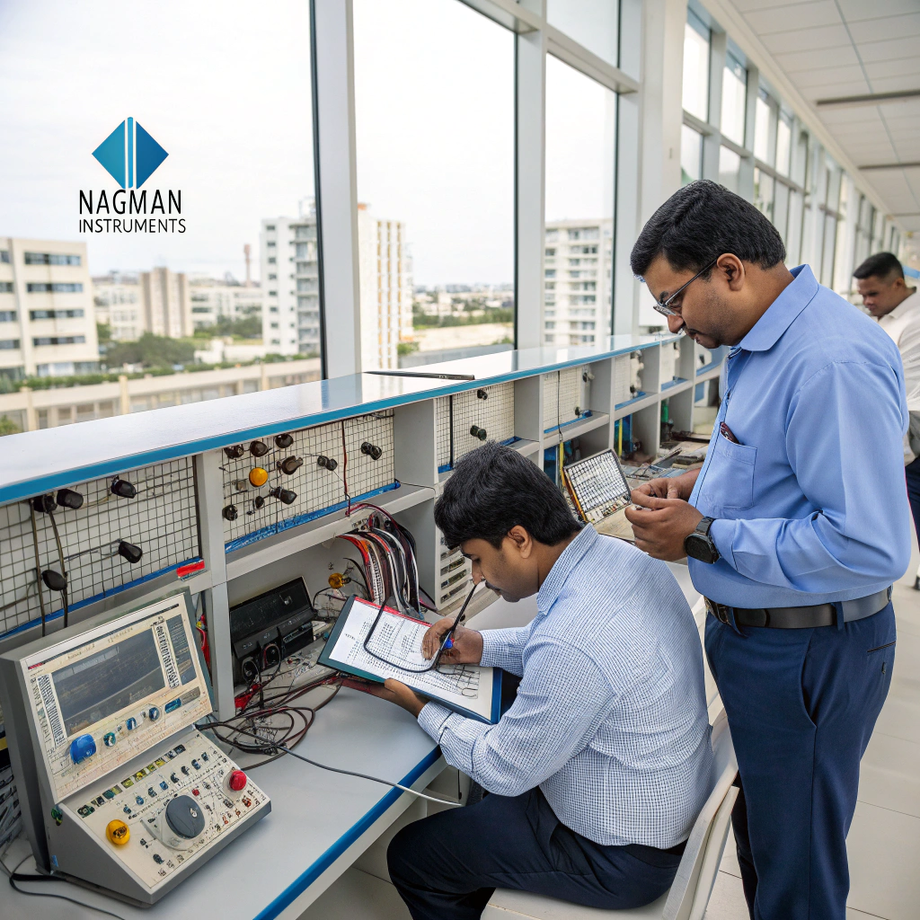In industries where accuracy and compliance are non-negotiable, instrument calibration plays a crucial role. Whether you’re operating in pharmaceuticals, oil & gas, food processing, or power generation, precise measurements ensure product quality, safety, and regulatory adherence.
That’s where test and measuring instruments come into play — especially temperature calibrators and process calibrators, which form the backbone of any industrial calibration setup.
In this blog, we’ll explore these tools, their applications, and why regular instrument calibration is essential for performance and reliability.
What Is Instrument Calibration and Why Is It Important?
Instrument calibration is the process of verifying and adjusting the accuracy of measuring instruments by comparing their readings with a known standard. The goal is to eliminate drift, ensure consistency, and maintain measurement integrity.
Key benefits of calibration:
- Regulatory compliance (ISO, NABL, FDA, etc.)
- Improved product quality
- Equipment safety and reliability
- Reduced downtime and maintenance cost
- Long-term cost efficiency
Temperature Calibrators: Ensuring Thermal Accuracy
Temperature calibrators are devices used to check and adjust temperature-measuring instruments like thermocouples, RTDs, and temperature sensors.
Types of temperature calibrators Dry Block Calibrator
- Portable and easy to use
- Ideal for field calibration
- Fast heating and cooling
Liquid Bath Calibrators
- Higher accuracy than dry blocks
- Suitable for laboratory use
- Black Body Calibrators
- Designed for calibrating infrared thermometers and pyrometers
Temperature Indicators with Reference Sensors
- High-accuracy, multi-sensor input systems
Applications:
- Industrial process control
- HVAC systems
- Power plants
- Food and beverage quality control
- Pharmaceutical cleanrooms
Process Calibrators: Versatile Multi-Function Tools
Process calibrators are used to simulate, measure, and troubleshoot a variety of process parameters like temperature, pressure, current, voltage, frequency, and resistance.
Types of process calibrators:
Multifunction Calibrators
- Combine electrical, temperature, and pressure functions
- Ideal for maintaining complex process instruments
- Loop Calibrators
- Focused on 4–20 mA current loops
- Useful for transmitter testing and loop checks
Pressure Calibrators
- Integrate pressure modules or sensors
- Used in pneumatic and hydraulic system maintenance
Where they are used:
- Chemical plants
- Refineries
- Water treatment facilities
- Instrumentation workshops
- On-site maintenance and troubleshooting
Test and Measuring Instruments in Calibration Labs
To ensure precise readings and meet accreditation standards, calibration labs rely on a variety of test and measuring instruments:
Common tools include:
- Digital multimeters (DMMs)
- Oscilloscopes
- Precision pressure gauges
- Signal generators
- Resistance decade boxes
- Reference thermometers
- Process calibrators and simulators
- Environmental chambers
These tools help create a controlled environment to verify and document the accuracy of client instruments across parameters like temperature, pressure, flow, voltage, current, and more.
How Often Should Instruments Be Calibrated?
Calibration frequency depends on:
- Manufacturer recommendations
- Industry regulations (e.g., ISO 9001, GLP, GMP)
- Instrument usage rate
- Operating environment (dust, heat, moisture)
- Past calibration history
In general, a calibration cycle of 6–12 months is followed for most industrial instruments.
Choosing the Right Calibration Partner
When selecting a calibration service provider or equipment supplier, consider the following:
- Accreditations (NABL, ISO/IEC 17025)
- Traceability to national/international standards
- Equipment range (temperature calibrators, process calibrators, pressure tools, etc.)
- Turnaround time
- Technical support and training
- Automation & software integration
Partnering with the right company ensures long-term measurement integrity, reduced compliance risk, and better equipment lifespan.
Final Thoughts
Whether you are calibrating a temperature sensor in a cold storage facility or troubleshooting a pressure transmitter in a refinery, instrument calibration is key to accuracy, efficiency, and regulatory compliance.
Investing in quality test and measuring instruments, including high-performance temperature calibrators and process calibrators, not only improves your process reliability but also ensures you’re audit-ready at all times.

Comments
Post a Comment